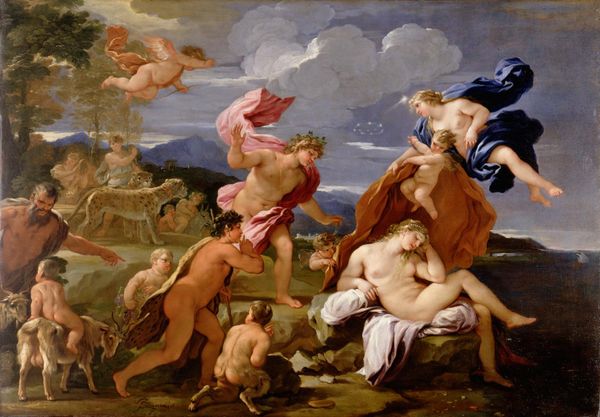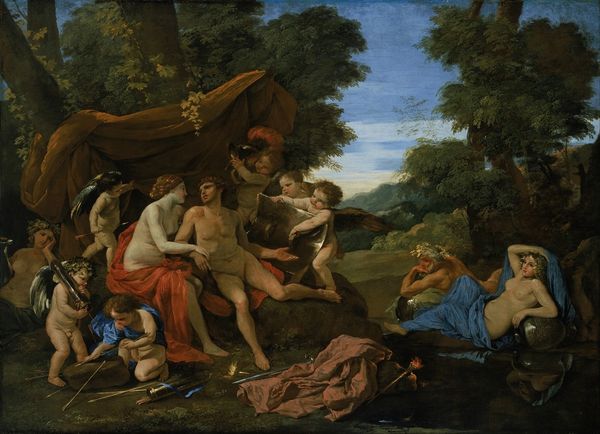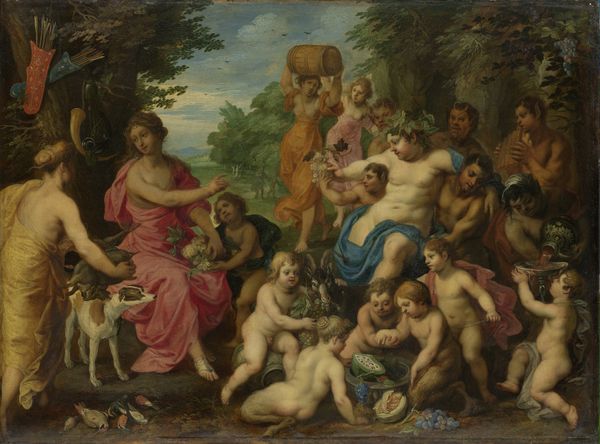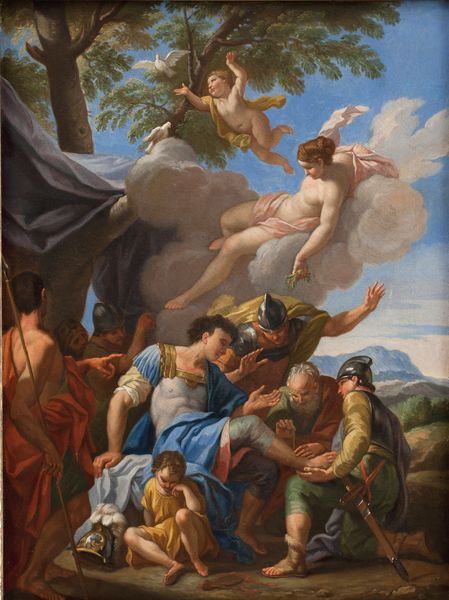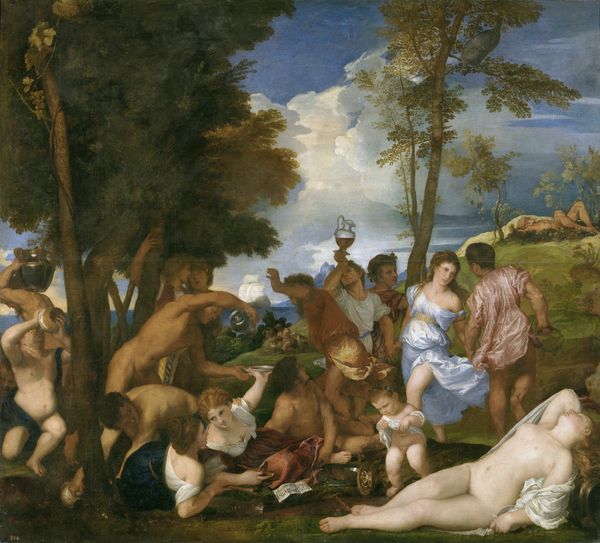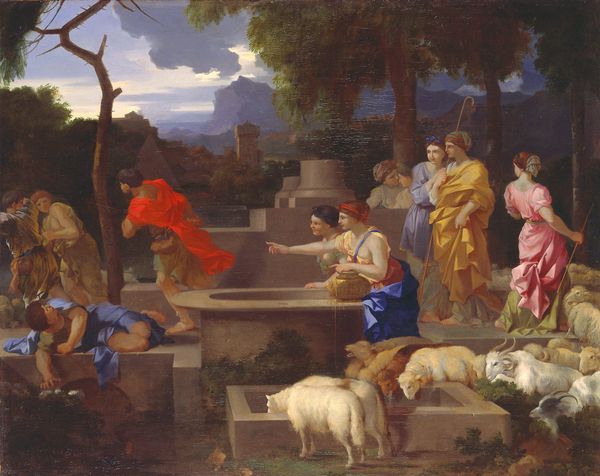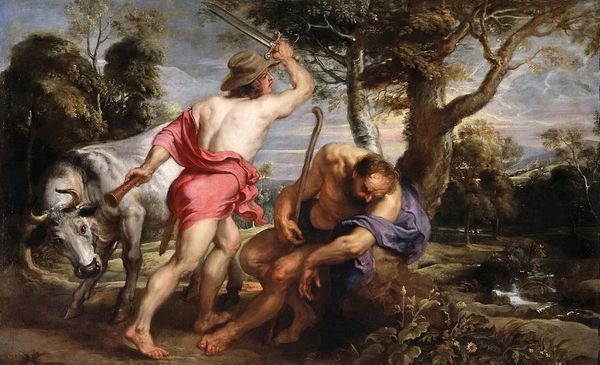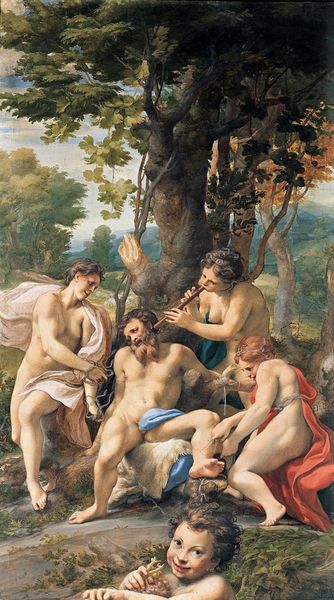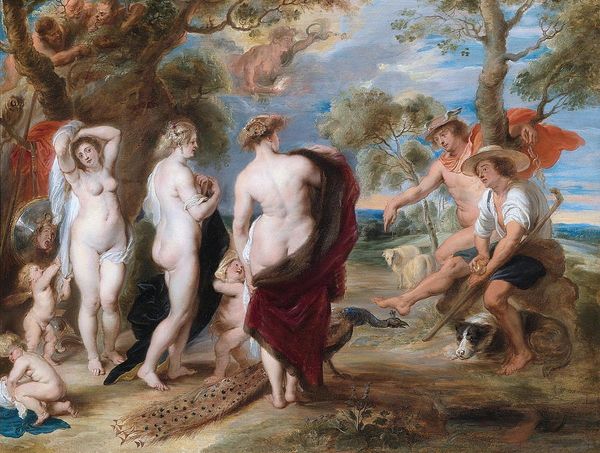
painting, oil-paint
#
baroque
#
painting
#
oil-paint
#
figuration
#
oil painting
#
roman-mythology
#
mythology
#
human
#
painting painterly
#
history-painting
#
nude
Dimensions: 100 x 142.5 cm
Copyright: Public domain
Curator: Looking at this, I immediately sense a certain swirling, exuberant energy. Almost chaotic. It feels as if I've stumbled into the middle of a festival, wild and uninhibited. Editor: We're looking at "Bacchanal Before a Statue of Pan", an oil on canvas painted by Nicolas Poussin in 1633, currently held at the National Gallery in London. In the spirit of the baroque period, it depicts a frenzied scene of revelry. It draws inspiration from ancient Roman mythology. Curator: Myth, yes, but painted with a distinctly human messiness. Look at the figures – some are graceful, others… well, rather clumsily drunk! There is something liberating in its abandonment. Almost like witnessing people pushing past social restrictions. Editor: Indeed. Poussin situates us within a history of bacchanals. These feasts weren't just about drunken merry-making; they held religious significance, celebrating liberation, fertility, and the dissolution of boundaries, especially around gender and social class. We might read it today through a lens of bodily autonomy and collective joy. Curator: That's really interesting because while it appears free and joyous, some of the scenes feel... borderline violent. Like that wrestling match near the statue. Is that playful roughhousing, or something more coercive? How might viewers from differing social backgrounds and gender identities experience this portrayal of hedonism? Editor: The tension is palpable, isn't it? Perhaps it reveals the complexities of these ecstatic rituals. They could be deeply empowering, but also fraught with the potential for transgression and abuse. It opens up space for us to acknowledge that power and privilege inevitably permeate even supposedly "liberated" spaces. It certainly is open to interpretation, but one can’t deny the power it holds to elicit thought, discussion, introspection on what constitutes safe enjoyment in a shared communal context. Curator: Absolutely. Art doesn’t exist in a vacuum. Context is everything. Now I see far more layers to that apparent mess. Editor: Right, the composition—it's not just a snapshot of drunken antics, but a window into how the artist, and by extension, we, reflect upon those aspects of being human as members of society. Thank you for your sharp insights; it truly has me thinking.
Comments
No comments
Be the first to comment and join the conversation on the ultimate creative platform.
